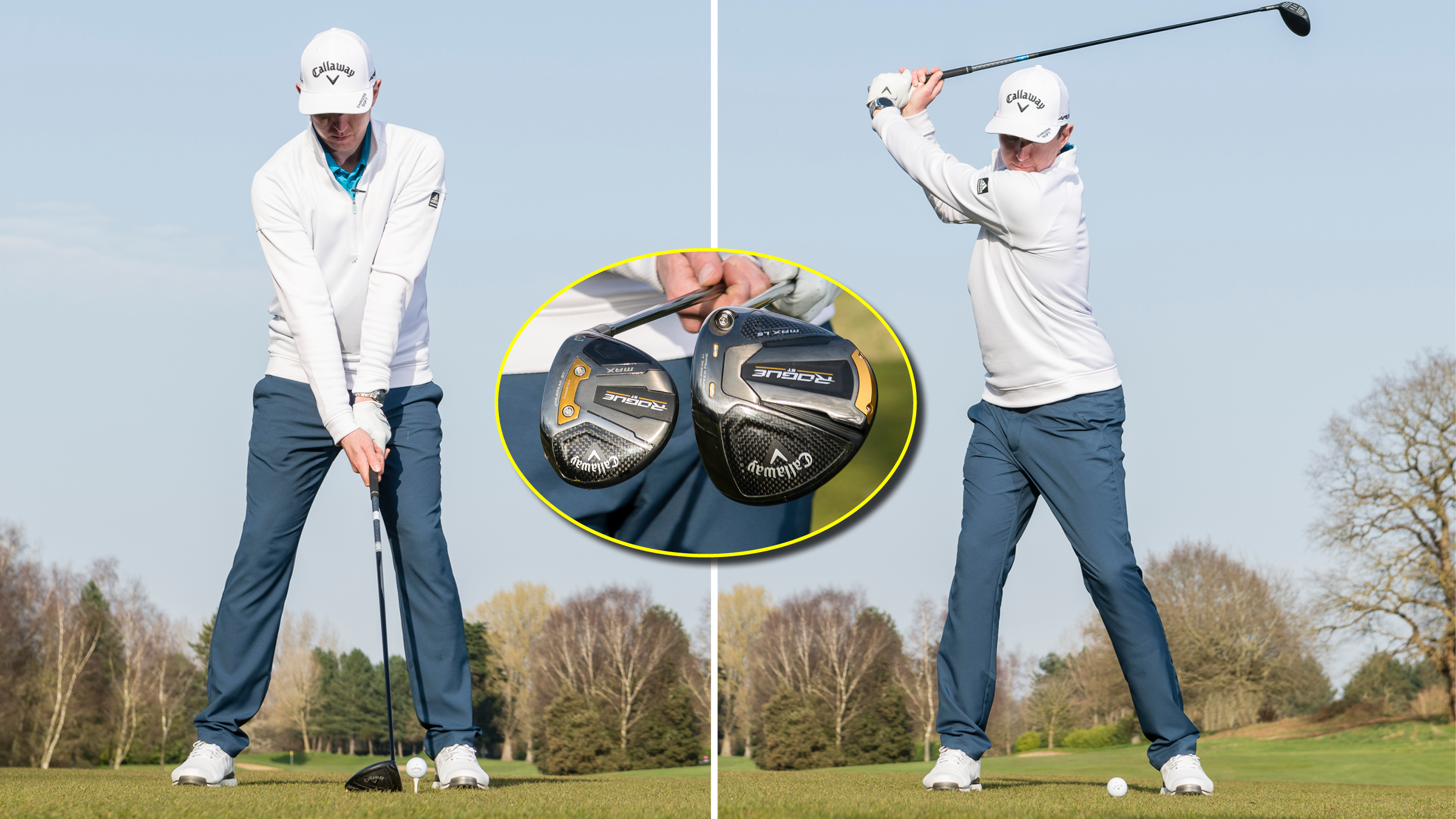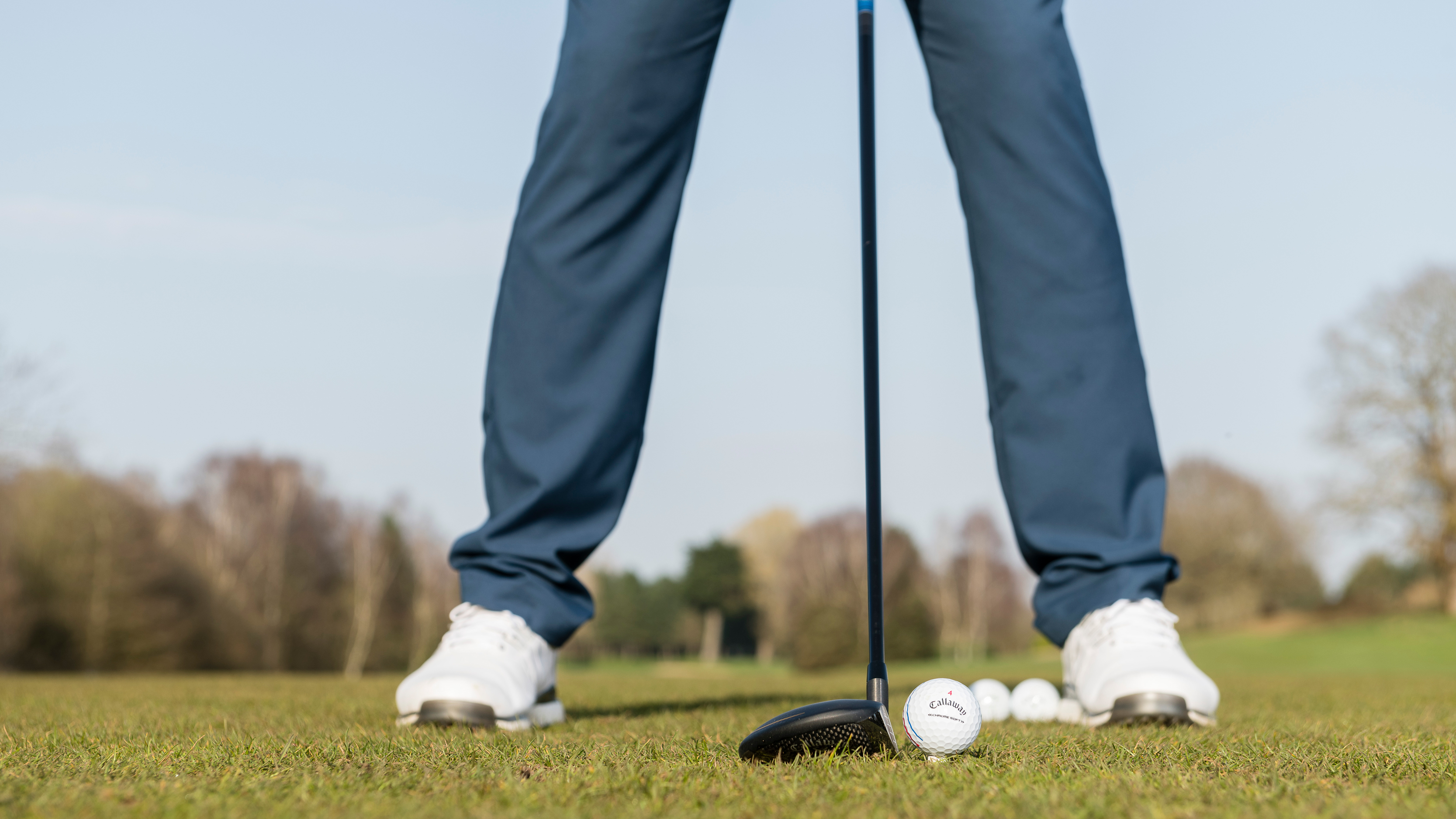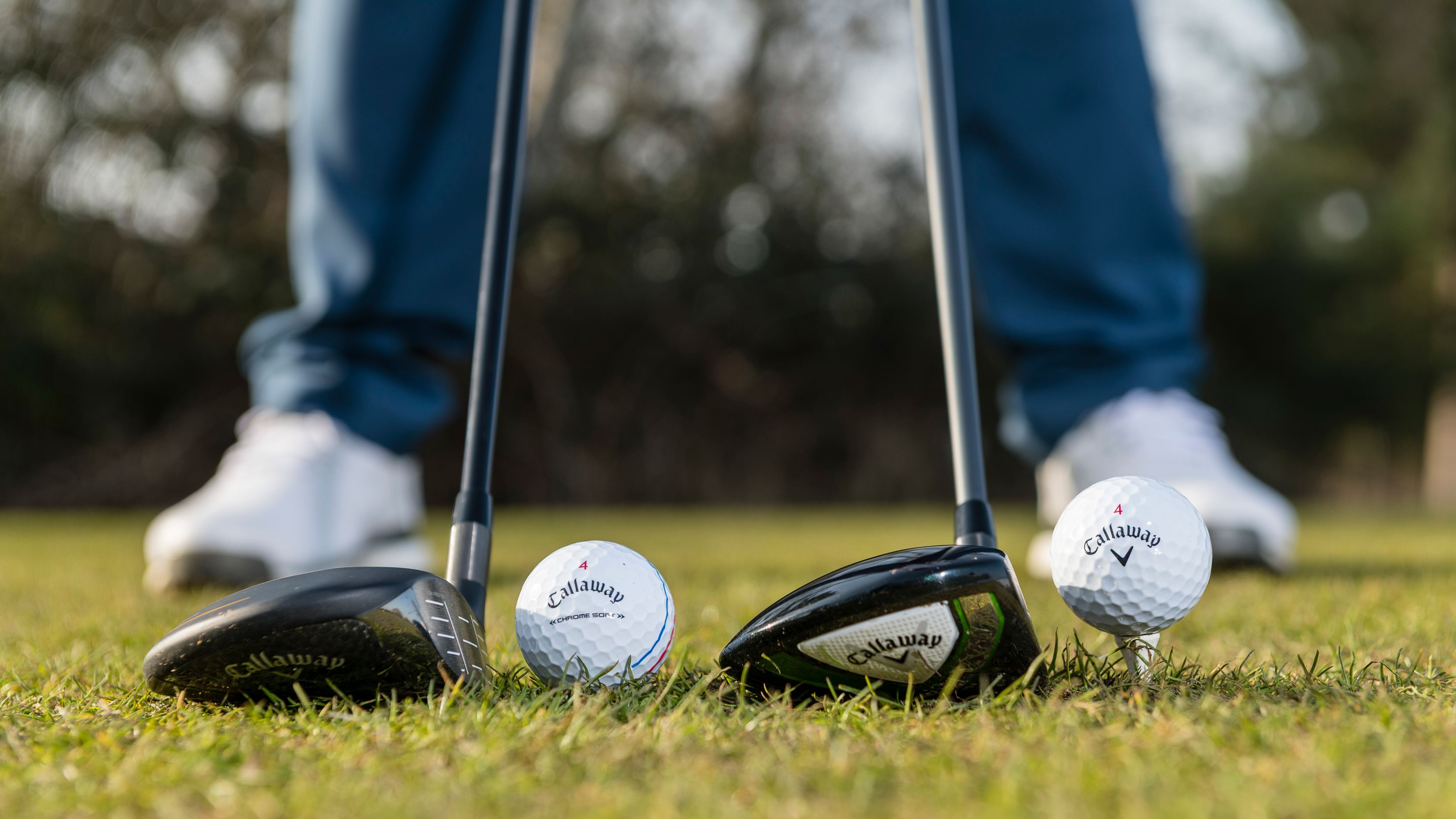3-Wood Vs Driver Tips
In this 3-wood vs driver video, Ben Emerson details the key differences that'll help you avoid the common pitfalls


Even though they are usually separated by as little as five degrees, how you treat a 3-wood compared to a driver should be very different. In the video and article below, PGA pro Ben Emerson runs through some of the key differences so you can get the most out of each club...
A common question among golfers is: what is the difference between the 3-wood and the driver when it comes to set-up and swing? A lot of people do tend to treat both the same and that can lead to problems.
Driver
Starting with the driver, it’s really important to understand that you’re hitting it hard in an attempt to get it travelling a long way down the fairway. And in order to do that, you need to think about how wide your golf stance should be so that you can turn and generate the required speed. Your stance should be at its widest with the driver in hand.
Other set-up differences with the driver are that the ball position should be at its most forward - just inside the left heel for a right-hander is ideal - and the spine angle should be tilted slightly away from the target so that you feel some pressure on the trail foot.

The spine should be tilted away from the target in your driver set-up and the takeaway should have plenty of width
Onto the swing itself and from this wide and stable position, you want to make sure you get the club travelling as far away from you in the takeaway, creating excellent width as you work through to the top. In the downswing, you then want to feel like it all starts with the lower body, which is a great way to get more power in your golf swing and allows the upper body to stay behind the ball to create optimal launch conditions.
3-wood
Moving onto the 3-wood and where people get this so wrong is that they try to copy what they do with the driver. So they tee the ball up too high when they’d be better trying to create the perfect lie as if they were about to hit a 3-wood off the fairway. The reason for this is that you want to avoid hitting the ball on the up - your golf swing posture will also have an impact here. In fact, if anything, you want to try and create a slightly negative attack angle.

With a 3-wood, the ball should be a little further back in your stance, as Ben demonstrates above
To do this, set your fairway wood ball position a little further back - about a couple of golf balls - towards the middle of your stance, which should also be slightly narrower. Once you’ve honed this address position, it’s vital to understand how to transfer your weight effectively with this club.
Subscribe to the Golf Monthly newsletter to stay up to date with all the latest tour news, equipment news, reviews, head-to-heads and buyer’s guides from our team of experienced experts.
All too often, when working out how to hit a 3-wood off the ground, golfers feel like they’ve got to sweep it away, meaning the weight shifts back and stays there coming through. While the intentions are noble, this motion will lead to tops and thins.
Instead, from the top you want to feel like you transfer your weight towards the target, which should allow you to make far better contact as you swing through to the finish. And don’t worry of you start to brush the turf or even take a little divot after the ball as that’s a common occurrence among the best players in the world.

A lot of the differences between how you treat a 3-wood and a driver relate to set-up
So, to recap, most of the differences between the driver and the 3-wood appear in the set-up. With the driver, widen your stance, get the ball lined up with the inside of your left heel, and tilt your spine slightly away from the target.
And when it comes to hitting a fairway wood or a 3-wood, narrow the stance slightly, shift the ball a couple of golf balls towards the middle, and ensure your weight moves through the shot. This will help you deliver the club with the right angle of attack and create a more downward strike that will improve contact and accuracy.

Location: Sand Martins GC
Ben’s modern approach to golf coaching has seen him become one of the most sought-after coaches in the country and teaches none other than Robbie Williams. His honest, modern and fun style of coaching has help thousands of golfers of all ages and abilities and he has been coaching for over 20 years.
Advice for practice:
Start with slow, small swings. If you can’t do it small and slowly there is not a hope in hell of doing it at full speed with a full swing! In other sports such as rugby or martial arts they slow learn new moves/plays before making them at full speed.
Teaching philosophy:
‘Why guess when you can access’ Ever new student goes through a full TPI movement screen, 3D motion capture and pressure plate analysis as well as TrackMan and 2D video analysis. Coaching is based on facts and not guess work.
Most common problem:
A lack of clubface understanding and awareness. I get golfers to aim the clubface directly at the target and get them to make a slow swings and deliver the club to the ball with an open face, then repeat the same thing again but with a closed face, followed by one at the target. Giving them full awareness based on feelings errors to find a happy middle ground.
-
 Vessel Golf discount codes
Vessel Golf discount codes$150 OFF Add one of these 6 Vessel Golf discount codes at the checkout to save on premium golf bags, including stand bags and backpacks.
-
 This Might Be Scotland’s Best New, Old, Play And Stay Venue…
This Might Be Scotland’s Best New, Old, Play And Stay Venue…The sympathetically renovated Marine Hotel in North Berwick offers timeless sophistication and luxury with a world-class course out the back gate.